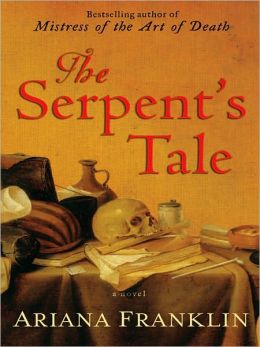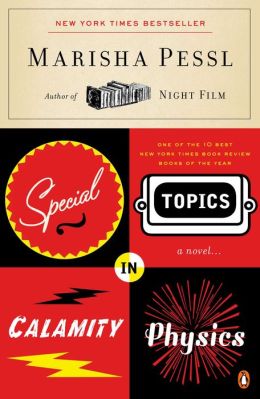I had my name on the list at the public library--awaiting the sequel to Ariana Franklin's Mistress of the Art of Death (see my earlier blog post on that) and it finally came last week. I devoured it in the way that true bibliophiles do--ignoring social conventions of conversation, participation in meal preparation, etc. Well worth the wait! Our medieval forensic doctor, Adelia Aguilar, is called back into service by King Henry II from her retirement to country life in the fens of central England. Henry's favorite mistress has been poisoned; all the obvious clues lead to Henry's disgruntled Queen. If Queen Eleanor is truly guilty, civil war is seemingly inevitable and Henry doesn't want that, so Adelia must determine the true identity of mistress Rosalind's assassin. Adelia is also reunited in this book with Rowley Picot, her former lover and father of her baby daughter; he is now Bishop of St. Albans and their relationship is very complex and totally understandable given their individual dispositions. Franklin is the pen name for Diana Norman, who has written a handful of other historical novels, many of them also set in the middle ages , and she has become quite well known for the accuracy of her historical research and richness of characters. All of this plus the challenge of finding the killer(s) makes for an absolutely engrossing read. I love learning about a country, a culture, a time period-- through literature, especially when it is well researched and palatably written. These remind me of Candace Robb's mysteries with another strong woman protagonist who works as an herbalist in medieval England. Other authors using similar time period and settings are Sharon Penman and Edith Pargeter (aka Ellis Peters) of Brother Cadfael fame. Of course I loved the BBC series with Derek Jacoby playing Cadfael. Anyway, this book is an absolutely delicious diversion so hide yourself away for a weekend and dive in.
Keeping track of what I read by jotting down my reactions, providing information about the author, and linking to additional reviews. And occasional notes on other book related things...
Tuesday, February 19, 2008
The Serpent's Tale
I had my name on the list at the public library--awaiting the sequel to Ariana Franklin's Mistress of the Art of Death (see my earlier blog post on that) and it finally came last week. I devoured it in the way that true bibliophiles do--ignoring social conventions of conversation, participation in meal preparation, etc. Well worth the wait! Our medieval forensic doctor, Adelia Aguilar, is called back into service by King Henry II from her retirement to country life in the fens of central England. Henry's favorite mistress has been poisoned; all the obvious clues lead to Henry's disgruntled Queen. If Queen Eleanor is truly guilty, civil war is seemingly inevitable and Henry doesn't want that, so Adelia must determine the true identity of mistress Rosalind's assassin. Adelia is also reunited in this book with Rowley Picot, her former lover and father of her baby daughter; he is now Bishop of St. Albans and their relationship is very complex and totally understandable given their individual dispositions. Franklin is the pen name for Diana Norman, who has written a handful of other historical novels, many of them also set in the middle ages , and she has become quite well known for the accuracy of her historical research and richness of characters. All of this plus the challenge of finding the killer(s) makes for an absolutely engrossing read. I love learning about a country, a culture, a time period-- through literature, especially when it is well researched and palatably written. These remind me of Candace Robb's mysteries with another strong woman protagonist who works as an herbalist in medieval England. Other authors using similar time period and settings are Sharon Penman and Edith Pargeter (aka Ellis Peters) of Brother Cadfael fame. Of course I loved the BBC series with Derek Jacoby playing Cadfael. Anyway, this book is an absolutely delicious diversion so hide yourself away for a weekend and dive in.
Sunday, February 10, 2008
Your choice of young heroines
Really I am stretched to think how the books I most recently read can be compared; they probably shouldn't be. They have young adult female protagonists, but that's about the extent of shared ground. So suffice it to say that they represent some of the variety of what I consume in a any given time period. The most dazzling by far is Special Topics in Calamity Physics, told from the POV of Blue vanMeer, now a freshman at Harvard, as she briefly recounts her early years in the company of her itinerant and professorial father, and then focuses on her final year in high school. Ordinary mortals like me will occasionally find it tough going to wade through the endless footnotes and citations comparing every person, place and experience to some bug, animal, book or movie. There is a complex mystery to be explored--surrounding the death (murder or suicide?) of the film teacher, Hannah Schneider (or is she?). Blue seems a decent sort in spite of everything and especially in contrast the her school peers who epitomize everything that is wrong with "the younger generation." I would never read this book again and someone would have to really twist my arm to make me read anything else this person subsequently writes--this is Marisha Pessl's first novel. That being said, it is--on occasion--bitingly funny, and brilliantly literate. Other reviewers have been more positive in their regard, for example see the piece in Salon.com.
At the opposite end of the spectrum, there is the totally fluffy (my word for reading that is reasonably entertaining but of little enduring literary value) first novel of Marissa Doyle, Bewitching Season. Our 17-year old protagonists, Persephone and Penelope, are twins and heir to witching talents which are being honed by their governess Melusine Allardyce. Set in early 19th century England, when Victoria is still a princess, they are about to embark on their "coming out" season in London society, which gets really complicated when Ally mysteriously disappears and Persey casts a love spell on the handsome boy next door.
And last but not least off the bookstack this week is How I Saved my Father's Life: And Ruined Everything Else by Ann Hood. The typical YA-type title should alert the reader to the pre-teen POV for the story. Madeline Vandermeer is just barely 11 years old when she accomplishes two miracles: the first is to move a glass of water without touching it and the second is to save her father’s life when he is caught in an avalanche. But now she needs to make a third miracle happen because her father returned to his family only briefly before leaving them for a celebrity life, a new wife, and a baby on the way. Madeline is convinced her mother is to blame for the divorce, because she is so “ordinary,” whereas the new step-mother, is so glamorous. Left in the falling-apart house they can’t afford to remodel, Madeline and her younger brother are weekly subjected to their mother’s culinary experiments which provide the fodder for her food column in Family magazine. Madeline sees her mother’s work as foolish and based on lies, since they are no longer the happy family of her dreams. Worse yet, when her stressed mother takes Madeline out of ballet school in Boston, an hour away, and puts her in a local class, she sees her chances of becoming a world class ballerina slipping away. Then Family magazine offers to send the family on an all-expense-paid trip to Italy so mom can write about the joys of travelling with children. While there, Madeline, initially interested only in visiting reliquaries of various saints, has some perception altering revelations of her own. This is a great book to offer tweens and teens facing divorce and new step-families. The young protagonist exhibits all the wretched feelings and behaviors that accompany such significant losses but comes eventually to a balanced view of parents and the hard choices we all make when life isn’t perfect.
Sunday, February 3, 2008
Who Done It?
This slang reference for mysteries will take on added significance if you read this twisty tale, What Never Happens, from Scandinavian Anne Holt, set in Oslo, Norway. This is another totally new author for me--but I just got back from ALA with a box and a bag full of advanced reading copies (ARCs) and I was in the mood for a mystery, so I grabbed this one. Apparently Ms. Holt has published an earlier work (variously known as Punishment or What is Mine) starring this pair of detectives, Johanne Vik and Adam Stubo, but now they are married with a brand new baby, significantly impinging on Johanne's ability to work on the case. Johanne has been trained as a profiler by the FBI, although she seems determined to keep that chapter of her life buried; with famous people dying in bizarre and symbolic ways, however, her skills are sorely needed. Holt has come up with an unusual and yet totally logical character for her killer and the ending will just leave you creeped out. This author is compared to Henning Mankell, a Swedish author of detective procedurals, but he is also someone unfamiliar to me. Maybe I need to pursue some of these Scandinavian authors a bit more, although the ones I have read (Giants in the Earth by O.E. Rolvaag, Smilla's Sense of Snow by Peter Hoeg, some of the books by Maj Sjowall and Per Wahloo.) are very dark. Must be the climate and the long winters....maybe not the best reading for an Oregon winter, or maybe just perfect!
Subscribe to:
Posts (Atom)


